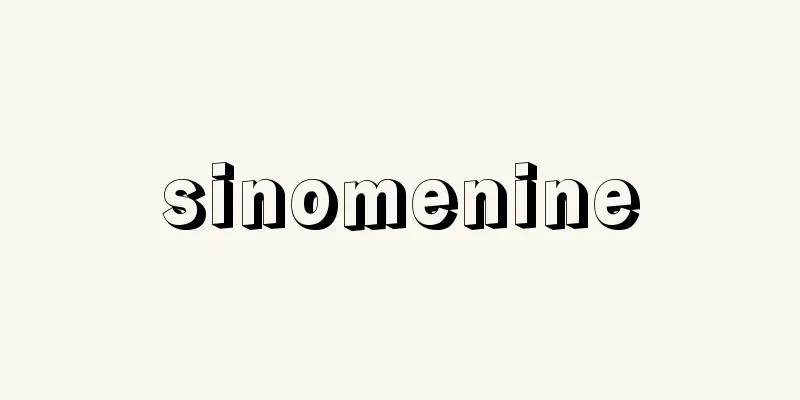sinomenine

|
…It is distributed in Honshu (west of Kanto), Shikoku, and Kyushu, and also extends to Taiwan and China. The rhizomes and stems contain the alkaloid sinomenine, which is called boi in traditional Chinese medicine and is used as an anti-inflammatory, analgesic, and diuretic drug. Dried vines are also used as material for knitting crafts. … *Some of the terminology that mentions "sinomenine" is listed below. Source | Heibonsha World Encyclopedia 2nd Edition | Information |
|
…本州(関東以西),四国,九州に分布し,台湾,中国にまで及ぶ。根茎,茎はアルカロイドのシノメニンsinomenineを含み,漢方で防已(ぼうい)と称され,消炎,鎮痛,利尿に効く薬として利用されている。また乾いたつるは,あみもの細工の材料になっている。… ※「sinomenine」について言及している用語解説の一部を掲載しています。 出典|株式会社平凡社世界大百科事典 第2版について | 情報 |
Recommend
Dendrobium farmeri (English spelling) Dendrobiumfarmeri
…[Koichi Ejiri]. … *Some of the terms mentioned i...
Sangaku - mathematical picture
This refers to votive plaques dedicated to shrine...
Maltese [species] (English spelling)
A pet dog breed. It is a very beautiful dog, cover...
Purchase pot - Purchase pot
...The former was adopted as part of the salt mon...
Young people's dance - Wakashuodori
(1) A type of Furyu dance that was popular in Kyot...
crucian carp
...A general term for freshwater fish of the genu...
André Malraux
French novelist and thinker. Born in Paris on Nov...
Grechaninov, Aleksandr Tikhonovich
Born: October 25, 1864, Moscow [Died] January 3, 1...
MTI - MTI
...It has also become an indispensable device in ...
Rajasthan (English spelling)
A state in northwestern India. It has an area of ...
Sewamono - Sewamono
A type of puppet theatre (joruri) and kabuki (kab...
Abbas Mirza (English spelling)
1789‐1833 The second son of Fatah Ali Shah, the se...
Kashima Ippu
Year of death: 1900 (Meiji 33) Year of birth: Temp...
Cadmeia - Cadmeia
…When his sister Europa was abducted by Zeus, he ...
Arachniodes sporadosora (English name) Arachniodessporadosora
…[Shigeyuki Mitsuda]. … *Some of the terminology ...









